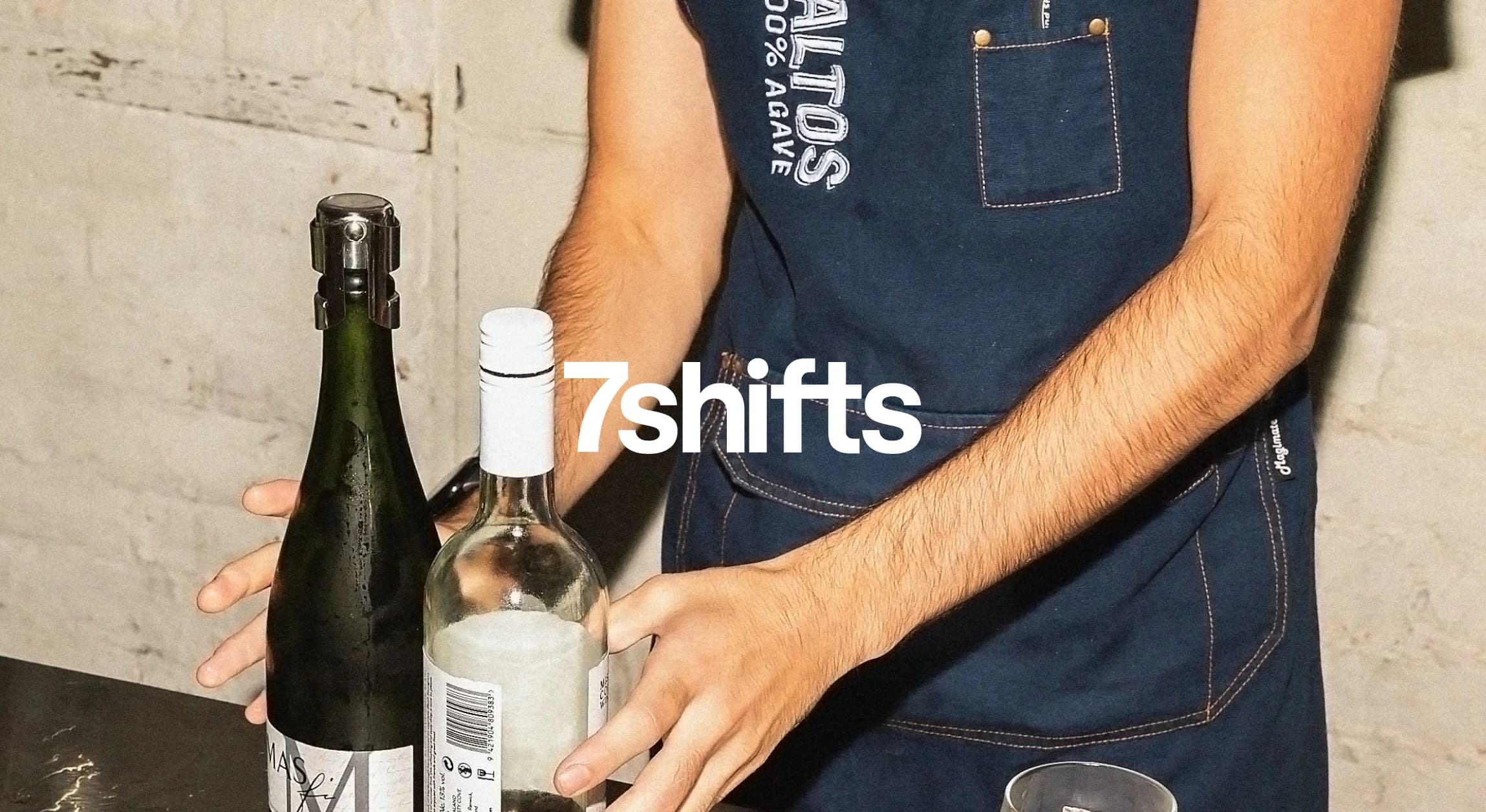Ask five people what a wine bar is, and you might get five different answers. Is it a place to sip rare bottles with a cheese plate? A casual hangout with vinyl records and tinned fish? Or something closer to a sit-down restaurant with a long wine list?
So, what is a wine bar? Truth is, it’s not quite a traditional bar, but it’s not exactly a full-service restaurant either. And that’s what makes it interesting. The wine bar format is flexible, approachable, and increasingly popular.
Why is it called a wine “bar”?
The term “wine bar” often causes people to picture a noisy place with big screens and a rowdy crowd. But a wine bar offers a more even-tempered environment, offering a relaxed place to enjoy and learn about the drink.
The word “bar” comes from the physical barrier or counter where drinks are served. This setup helped manage service and security. Over time, “bar” came to mean any place where drinks are served over a counter.
It then further evolved to mean a place where people gather to socialize and enjoy beverages. Even though wine bars are different from traditional establishments like Bar 404 and The Snug, the term “bar” still applies.
They’ve become places where people gather to drink, socialize, and enjoy the atmosphere. The focus is on wine, but the social aspect remains central.
Types of wine bars
Just like traditional bars where different styles and themes exist, wine bars also have different concepts. There are those that focus on serving wine only, while there are those that offer a full-service dining experience with extensive wine selections.
1. Purely wine bars
These are types of bars that focus purely on wine. They often hire sommeliers to guide customers through their choices. These establishments prioritize wine education and exploration, creating an atmosphere for patrons to learn and enjoy.
For example, Vin Sur Vingt in New York offers a wide range of French wines by the glass, so you can taste and learn about different wines. These bars often feature a menu of cheeses and small bites to complement the wines.
2. Wine-focused restaurants
Wine-focused restaurants incorporate a strong wine program in a full-service dining experience. These establishments provide a full menu of appetizers, entrees, and desserts, each thoughtfully curated to complement the cuisine.
They often exude a refined ambiance that appeals to diners looking for a more upscale experience. Some wine-focused restaurants offer tasting menus or host wine dinners, like Arden Wine Bar and Kitchen in Portland, Oregon, which offers a Pacific Northwest-inspired menu alongside an extensive wine list.
Some wine bars also allow guests to bring their own bottles, usually for a small corkage fee. This gives regulars a bit of flexibility, especially if they’re celebrating or have a special bottle at home. If you plan to offer this option, make sure your fee is clearly listed on the menu and your staff is trained to handle service properly.
3. Wine bars inside wineries or vineyards
Wine bars inside wineries or vineyards offer an immersive experience that gives guests a direct connection to the source of the wines they enjoy. It’s also good for showcasing your own wines for a more personal touch.
Aside from honing their palates, visitors can learn about the grape varieties cultivated, the aging process, and food pairing suggestions. If you plan on creating a wine bar inside a winery, consider the visitor experience.
Incorporate elements that reflect the winery’s identity and the surrounding landscape. This might include rustic decor, panoramic views of the vineyards, and a relaxed setting that encourages guests to savor each glass.
4. Neighborhood bars (third spaces)
Neighborhood wine bars are more than just places to drink wine. They’re community hubs. These establishments serve as “third spaces,” describing venues that aren’t one’s home or workplace, but are essential for social interaction and building a sense of community.
Unlike traditional bars or upscale wine establishments, neighborhood wine bars prioritize creating a relaxed atmosphere. They’re designed to be inclusive and welcoming, encouraging patrons to come together, talk, and build connections.
What can one expect on the menu?
You can find one of the best-tasting wines in a wine bar. On the other hand, there are other offerings on the menu, like snacks and salads, to complement the drink and non-wine options.
Wine
Naturally, the wine menu is the main attraction in this type of bar. Most wine bars offer both glass and bottle service. Aside from catering to different taste preferences, it also accommodates different budgets, allowing customers to sample different wines or commit to a favorite.
Wine menus often focus on specific themes. Some bars highlight regional selections, such as Italian or Californian wines, while others emphasize particular varieties like Pinot Noir or Tempranillo.
Snacks and small plates
Wine bars thrive on more than just wine. They offer food that enhances the drinking experience. Small plates help create a balanced menu that encourages customers to linger, taste, and return.
Cheese and charcuterie are a classic pairing with wine, which is why they remain a staple in wine bars. Offering a selection of cured meats, artisanal cheeses, and accompaniments like olives and nuts provides a variety of flavors that complement different wines.
Once considered a pantry staple, tinned fish has also become a trendy offering in wine bars. High-quality options like sardines, anchovies, and mackerel are served with crusty bread, butter, and pickles, providing a savory and substantial snack that brings out the wine’s flavors and complexity.
Simple yet effective, bowls of mixed nuts, marinated olives, and assorted crackers are easy-to-prepare snacks that encourage patrons to order another glass. These items offer a salty contrast to wines and are perfect for customers seeking light, shareable bites.
Salads and desserts
Some wine bars expand their menu with light salads and desserts. Fresh, seasonal salads can provide a refreshing palate cleanser between glasses, while desserts like chocolate truffles or fruit tarts offer a sweet ending to the wine experience.
A crisp Riesling is a versatile choice here. It pairs well with citrusy salads and has enough acidity and fruit to complement lighter desserts without overpowering them.
Non-wine options
Offering non-wine options can bring more people through your doors. It allows you to introduce the drink to people who might not have thought about wine’s complexity before.
These might be guests who prefer beer or cocktails, or those who simply want a non-alcoholic alternative. Adding low-alcohol and non-alcoholic drinks to your menu can also attract health-conscious patrons and those seeking variety.
Craft beers and ciders can complement your wine offerings with their unique flavor profiles. You can also offer artisanal cocktails made with local spirits.
If you decide to include cocktails, consider featuring those that match your bar’s overall theme and atmosphere. For example, a wine bar with a Mediterranean food menu might offer a vermouth spritz or an herb-forward gin cocktail.
Who works in a wine bar?
Sommeliers or wine stewards shine bright in a wine bar with their expertise. Bartenders, servers, and BOH staff are also key players in creating a memorable wine bar experience.
Sommelier or wine steward
A sommelier or wine steward is a trained professional who helps guests select wines that match their tastes, meals, and budgets. While not every wine bar employs a sommelier, having one can significantly enhance the customer experience.
They work in the FOH, curating the wine list and making sure there’s a balanced selection that complements the bar’s menu. They assist customers in choosing wines that pair well with specific dishes, like a bright Sauvignon Blanc with goat cheese salad or a bold Syrah with charcuterie.
Aside from serving wine, they’re also responsible for maintaining the inventory and proper storage conditions. They can help teach your staff about the different wines so that they can effectively recommend and discuss wine with customers on their own.
Bartenders or pourers
Bartenders and pourers handle the wine service at the bar, making sure each glass or bottle is served correctly. In smaller wine bars, they often take on multiple roles, including delivering the drinks to customers at their tables.
More than pouring wine, they also play a role in creating a welcoming atmosphere for customers. They engage guests in conversations and help guests feel comfortable and informed about the wine selection.
While bartenders typically mix drinks in traditional bars, they may focus more on wine presentation and knowledge in this setting. They can also assist with food pairings and recommend complementary small plates.
As for pourers, they’re specialized staff that ensure each pour maintains the right temperature and uses appropriate glassware.
For example, a pourer might chill a bottle of Pinot Grigio to around 45°F before serving it in a tulip-shaped glass to preserve its crispness and aroma. Or, for a full-bodied red like Cabernet Sauvignon, they’ll serve it slightly below room temperature in a wide-bowled glass to help it open up.
Servers
Unlike servers in standard restaurants, those in wine-focused bars are expected to have a deeper understanding of wines and their pairings.
They should be familiar with various wine types, including red, white, rosé, sparkling, and dessert wines. This knowledge lets them confidently discuss the wine list and make informed recommendations to customers, especially with food pairings.
Proper wine service means presenting the bottle to the customer, opening it correctly, and pouring the wine appropriately. Servers should also be attentive to customers’ needs, refilling glasses as needed for a pleasant dining experience from start to finish.
BOH
It’s easy to forget the BOH team, but they play an important role in supporting the overall guest experience. For wine bars focusing on simple accompaniments like tinned fish, cheeses, and charcuterie, the kitchen setup can be minimal.
Often, a single staff member can manage the preparation, using basic equipment such as a slicer, small oven, or microwave. Wine bars that provide a broader food menu may need a more equipped kitchen and additional staff.
Thinking of opening your own wine bar?
More than places to drink, wine bars bring people together. Understanding the different types can help you decide on the right concept for your business. Ultimately, focus on creating a memorable guest experience as you share your passion for wine.
Behind every great wine bar is a team that runs like clockwork. Use bar and brewery team management software to manage FOH and BOH staff and keep communication in one place.

Rebecca Hebert, Sales Development Representative
Rebecca Hebert
Sales Development Representative
Rebecca Hebert is a former restaurant industry professional with nearly 20 years of hands-on experience leading teams in fast-paced hospitality environments. Rebecca brings that firsthand knowledge to the tech side of the industry, helping restaurants streamline their operations with purpose-built workforce management solutions. As an active contributor to expansion efforts, she’s passionate about empowering restaurateurs with tools that genuinely support their day-to-day operations.
